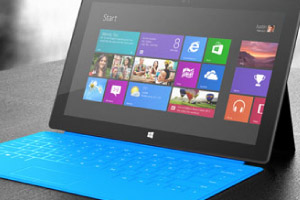It’s no secret that many companies are jumping on the social media bandwagon. In fact, we’ve discussed its impact on your revenue before. But what about how it can help you improve interactions with your customers?
As customer communication is increasingly managed with technology, an interesting phenomenon is occurring. While there is a popular opinion that as we are increasingly relying on technology we are losing the personal connections we once enjoyed, there is another perspective emerging. It appears these online connections—which are being made by companies and individuals alike—are serving to create a sense of community and foster real human communication. By fostering the free exchange of ideas and thoughts, services like Twitter are capitalizing on soapbox mentality in order to encourage communication. That is: each person believes their own opinion to be important and wishes to share it; so why not let them? If expressing your opinion directly to your favourite basketball star is as easy as throwing an @the_real_shaq into your tweet—and you get a response—you’ll likely feel that you have a lot more power to express your opinions.
How can that be used to your advantage as a business owner? Well, the 140 character cap on tweets and direct messages can help to distil questions and answers into their purest form. By cutting out the fat when it comes to customer exchanges, Twitter and services like it can help to cut down on response time from your team. It also makes feedback a breeze for your customers since presumably a client contacting you via Twitter already uses the service regularly. Making it easy to contact you is, of course, the opposite of what most companies do by burying their contact information somewhere at the back of their homepage never to be heard from again. But there are many reasons why hiding your contact info is not a good idea, not the least of which is that it makes your customers angry.
By making it straightforward and simple to receive feedback in a format you prefer, you encourage your customers to use that service to get in touch with you. This can help cut down on the number of long-winded e-mails you’re writing and increase the number of clients you’re able to help quickly. Third party services can also help to aggregate your customer queries from multiple locations to help you reach several venues at once. As an example: an FAQ is good, but a Community page where users can share answers, (and which also feeds into your tech support forum) is better. And it’s this customer interaction that businesses should be aiming for when setting up their social media. It’s not just the small businesses that are hopping on this band wagon either, even large corporations like Apple, Tide and Tim Horton’s are jumping on board (some more successfully than others). So it seems the corporate world is embracing the idea that interacting online can give your brand strength.
Ultimately it’s more about how you use the tool than what tool you’re using but with careful consideration you can improve your customer communication by improving the speed and quality of your support. What’s more, public interactions between companies and customers can serve to give your potential customers a good look at what type of company they’re researching. That could be the push you need to turn that lead into a sale.
How to do feel about the twitter revolution? As evident from the articles below there are many different ideas of how to handle twitter for businesses. How do you use yours? We want to hear from you!






0 Comments